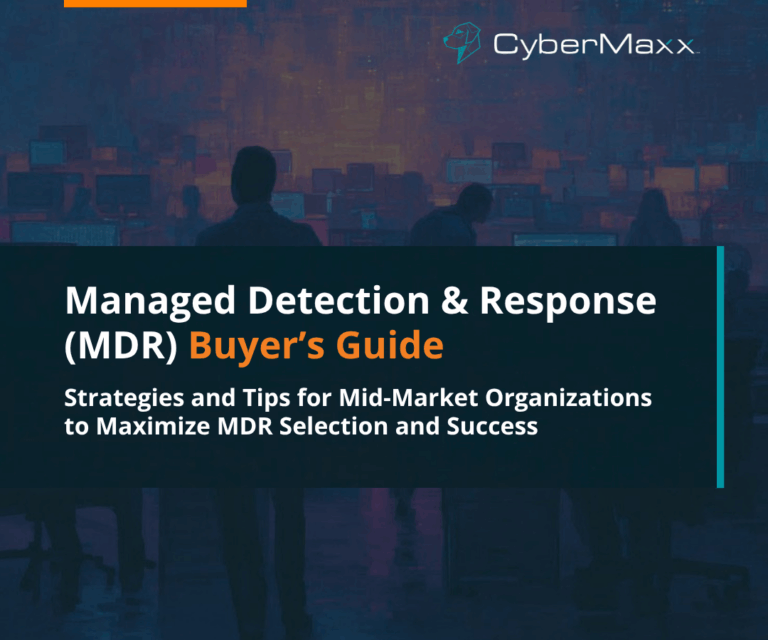Cyber Threat Intelligence (CTI) is a cornerstone of modern cybersecurity strategies. It allows security teams to proactively anticipate, detect, and mitigate evolving threats so they can make informed decisions.
What is Cyber Threat Intelligence?
In this section, we will do a quick introduction to Cyber Threat Intelligence (CTI), for those who are unfamiliar.
Definition and Key Components
Cyber Threat Intelligence (CTI) is the evidence-based information about a cyber attack that cyber experts use to understand and analyze threats.
CTI consists of several components, including:
- Data collection: Involves collecting data from sources such as threat feeds and security logs
- Threat analysis: Involves surveilling network traffic, logs, and alerts in real-time to detect suspicious activities
- Threat classification: Involves sorting threats based on their type and prioritizing them based on their severity and potential impact.
- Threat dissemination: Involves sharing threat information with relevant parties such as stakeholders and the government.
Importance in Cybersecurity
As the number of ransomware and extortion attacks continues to grow, CTI has become a vital way for organizations to predict attacks.
CTI provides a comprehensive and up-to-date overview of emerging trends and threats. This helps security teams understand more about the types of threats they’re likely to face and who their potential adversaries are.
This information allows organizations to make informed decisions about which technologies and security measures they may need to invest in to strengthen their defenses. Organizations can also foster stronger partnerships by sharing this information with other organizations that are facing similar threats.
How Cyber Threat Intelligence Integrates into Cybersecurity Strategies
Organizations can integrate Cyber Threat Intelligence (CTI) into their broader security strategy to promote a proactive approach to cybersecurity.
Enhancing Threat Detection and Response
CTI provides security teams with actionable intelligence about emerging threats and attack patterns. This information comes from several key sources, including logs from internal sources, information released by public agencies, and information from the dark web.
CTI also provides organizations with indicators of compromise (IoCs) and the Tactics, Techniques, and Procedures (TTPs) of threat actors. This can help them hunt for threats that could have otherwise gone unnoticed. Examples include unusual sign-in attempts, network traffic anomalies, and unexpected changes to system configurations. This information helps organizations identify issues before they cause problems.
Informing Risk Management and Decision-Making
You can’t protect what you don’t understand, which is why CTI provides enhanced insights that allow security teams to assess risks. Using these insights, they can make informed decisions based on the types of threats most likely to impact the organization and their consequences.
This contributes to risk management by allowing them to prioritize the most relevant threats according to their severity and potential impact, and assess potential mitigation strategies. For instance, if CTI reports a new phishing campaign targeting the aerospace industry, the organization can immediately alert employees of the threat. They can also increase email security measures.
Benefits of Cyber Threat Intelligence in Modern Cybersecurity
Cyber Threat Intelligence (CTI) offers many benefits for organizations and should be integrated into any robust cybersecurity strategy.
Proactive Defense
CTI allows organizations to adopt a proactive defense posture by helping them gather information about potential threat actors and their attack methods. It provides an understanding of attacker behavior and a clearer picture of the possible motives behind the attack.
Having access to this information also allows organizations to anticipate potential threats and prepare tailored defense strategies in advance. This reduces the likelihood of successful attacks and can significantly reduce their impact if they do occur.
Improved Incident Response
CTI provides real-time insights into threat activity, including phishing campaigns, IoCs, and malicious IP addresses. It can also provide organizations with information about specific threats targeting their industry or location.
This technology means security teams can instantly update their security controls to address these threats. For instance, security teams can block malicious emails or IP addresses across the organization. Threats can be contained as they unfold instead of after they cause widespread damage. Understanding the common tropes associated with a recent campaign can provide the Incident Response team with the intel they need to ensure the complete eradication of a threat actor’s presence during an investigation.
Enhanced Compliance and Reporting
Organizations can use CTI to identify threats relevant to specific regulatory requirements and to access relevant threat data, trends, and response actions. This information is required for documentation purposes and for regulatory audits to show compliance and avoid regulatory breaches.
Implementing Cyber Threat Intelligence: Best Practices
Implementing CTI within your organization starts with defining clear objectives and determining how it aligns with your business objectives. This outlines which assets are most important to protect.
It is vital to select the right tools, provide staff with adequate training, and establish clear processes for using threat intelligence effectively. Specialized tools allow teams to collect, process, and analyze data from diverse sources, including threat feeds, open-source intelligence, and internal logs. This identifies patterns and provides more information about the impact of potential threats. Teams can then share this data with relevant stakeholders to improve decision-making across the organization.
If you need extra support, consider using CyberMaxx’s specialized threat intelligence tools and managed detection and response (MDR) services. We can help you take swift action and guide you in the right direction when implementing a CTI strategy.
Stay Ahead of Evolving Threats With Cyber Threat Intelligence
Cyber Threat Intelligence (CTI) has become an essential part of any modern cybersecurity strategy. Consider integrating it into your organization to stay ahead of evolving threats and protect your critical assets.





